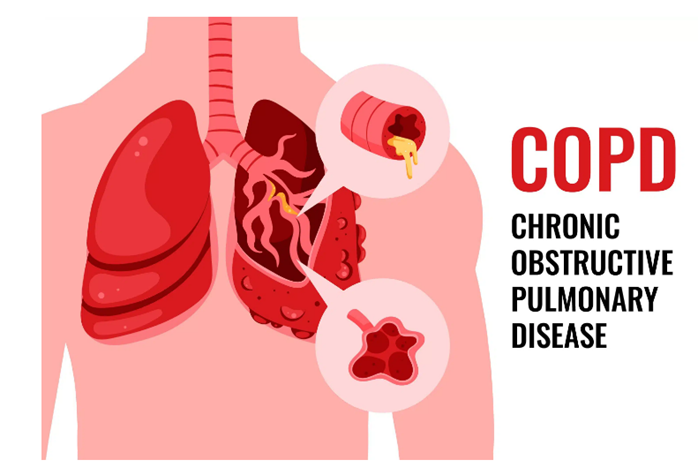An adolescent from a poor neighborhood who has a history of severe chronic obstructive pulmonary disease (COPD. and peripheral vascular disease (PVD. is being discharged from a funded nursing facility. Which action is most important for the nurse to implement?
Reinforce need for adequate hydration.
Provide typed instructions for healthy diet selection.
Schedule follow-up appointments with specialists.
Demonstrate specific breathing and walking exercises.
The Correct Answer is C
Choice A: Reinforcing need for adequate hydration is not the most important action for the nurse to implement, as this is a general recommendation for all clients and does not address the specific needs of this client. This is a distractor choice.
Choice B: Providing typed instructions for healthy diet selection is not the most important action for the nurse to implement, as this may not be feasible or accessible for this client who lives in a poor neighborhood and may have limited resources and literacy. This is another distractor choice.
Choice C: Scheduling follow-up appointments with specialists is the most important action for the nurse to implement, as this can ensure that this client receives continuous and comprehensive care for their complex and chronic conditions, which can improve their outcomes and quality of life. Therefore, this is the correct choice.
Choice D: Demonstrating specific breathing and walking exercises is not the most important action for the nurse to implement, as this can be done by other health care professionals or at home by the client. This is another distractor choice.

Nursing Test Bank
Naxlex Comprehensive Predictor Exams
Related Questions
Correct Answer is A
Explanation
Choice A is correct because a quiet, non-stimulating environment can help reduce the agitation, confusion, and hallucinations that are common in alcohol withdrawal delirium. The nurse should also provide reassurance, orientation, and safety measures to the client.
Choice B is incorrect because forcing oral fluids and providing frequent small meals are not the most important interventions for a client with alcohol withdrawal delirium. The client may have difficulty swallowing, nausea, vomiting, or diarrhea that can interfere with oral intake. The nurse should monitor the client's hydration and nutrition status and provide intravenous fluids or supplements as needed.
Choice C is incorrect because confronting the client's denial of substance abuse is not the most important intervention for a client with alcohol withdrawal delirium. The client may not be able to comprehend or accept the reality of their situation due to their altered mental state. The nurse should avoid arguing or challenging the client and focus on providing supportive care.
Choice D is incorrect because encouraging attendance and group participation are not the most important interventions for a client with alcohol withdrawal delirium. The client may not be able to participate in group activities due to their severe withdrawal symptoms and may need individualized care. The nurse should facilitate referrals to appropriate resources for substance abuse treatment when the client is stable and ready.
Correct Answer is C
Explanation
Choice A reason: Scheduling the child for a STAT magnetic resonance imaging (MRI) of the neck is not a priority action for the nurse. MRI is a diagnostic test that uses magnetic fields and radio waves to produce images of the internal structures of the body. MRI of the neck may be useful to rule out other causes of respiratory distress, such as tumors, abscesses, or foreign bodies, but it is not an urgent procedure. Moreover, MRI requires the child to lie still for a long time, which may be difficult or impossible for a child who is anxious and in respiratory distress.
Choice B reason: Providing a nebulizer treatment with bronchodilators is not a suitable action for the nurse. Nebulizer is a device that delivers medication in the form of a mist that can be inhaled into the lungs. Bronchodilators are medications that relax the smooth muscles of the airways and improve airflow. Nebulizer treatment with bronchodilators may be helpful for children with respiratory distress caused by asthma, bronchiolitis, or chronic obstructive pulmonary disease, but not for children with respiratory distress caused by upper airway obstruction, which is the most likely scenario for this child.
Choice C reason: Obtaining bedside trays for intubation or tracheotomy by the healthcare provider is the most appropriate action for the nurse. Intubation is a procedure that involves inserting a tube through the mouth or nose into the trachea to secure the airway and provide ventilation. Tracheotomy is a surgical procedure that involves creating an opening in the neck and inserting a tube into the trachea to bypass the upper airway obstruction. Both procedures are life-saving interventions for children with respiratory distress caused by upper airway obstruction, which is the most likely scenario for this child. The nurse should prepare the necessary equipment and assist the healthcare provider in performing these procedures.
Choice D reason: Beginning prescribed intravenous antibiotic administration is not a relevant action for the nurse. Antibiotics are medications that kill or inhibit the growth of bacteria that cause infections. Antibiotics may be indicated for children with respiratory distress caused by bacterial infections, such as pneumonia, tonsillitis, or epiglottitis, but not for children with respiratory distress caused by non-infectious causes, such as foreign bodies, anaphylaxis, or congenital anomalies. Moreover, antibiotics are not an immediate intervention for respiratory distress, as they take time to exert their effects.
Whether you are a student looking to ace your exams or a practicing nurse seeking to enhance your expertise , our nursing education contents will empower you with the confidence and competence to make a difference in the lives of patients and become a respected leader in the healthcare field.
Visit Naxlex, invest in your future and unlock endless possibilities with our unparalleled nursing education contents today
Report Wrong Answer on the Current Question
Do you disagree with the answer? If yes, what is your expected answer? Explain.
Kindly be descriptive with the issue you are facing.
